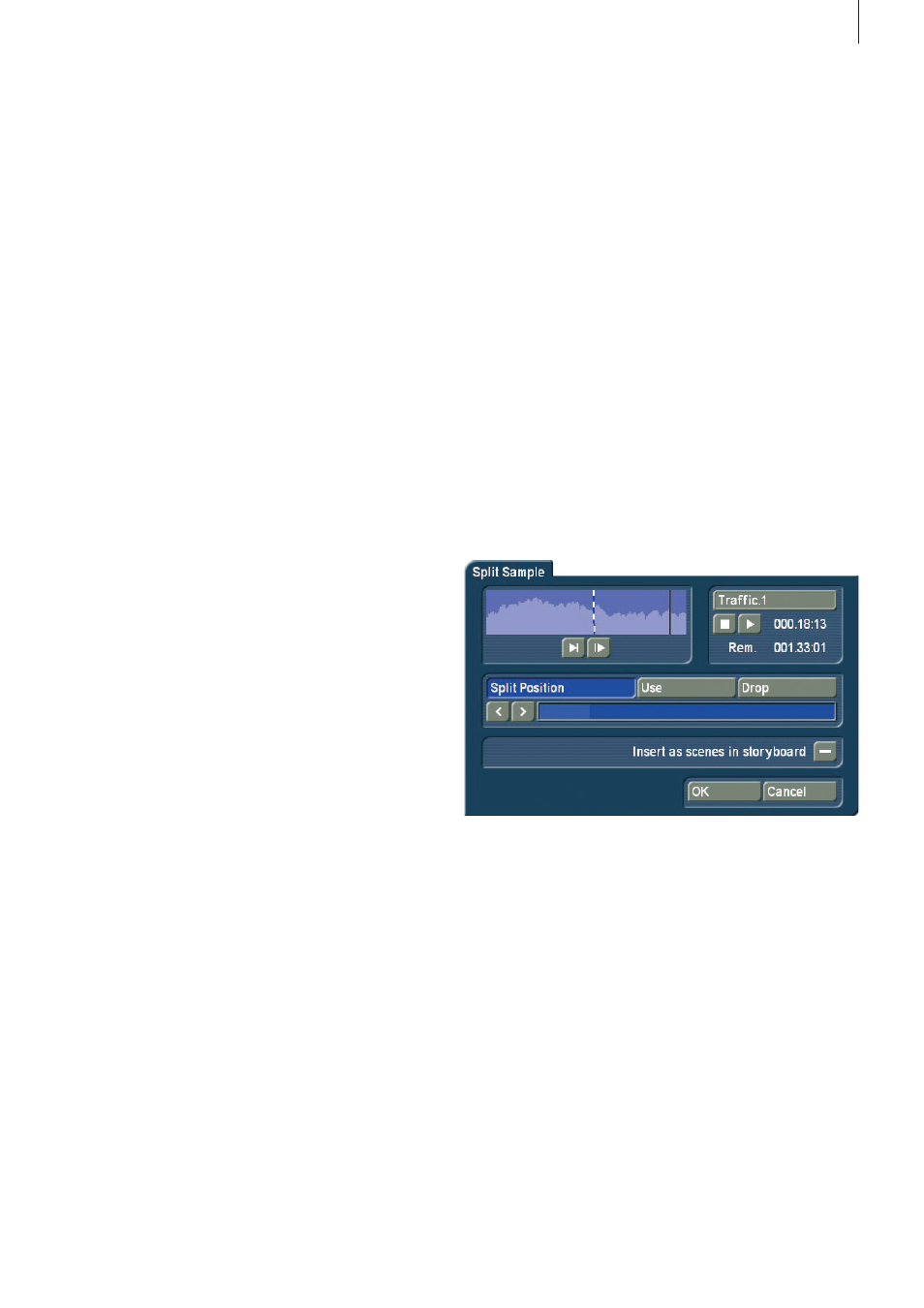MacroSystem Bogart SE Ver.4 User manual User Manual
Page 65

65
Bogart SE 4 User manual
Any audio samples placed on the clipboard are deleted when
the system is switched off .
Also in this menu you see the button “Pre-listen” under the
effect options . Here, you have the option of either deactivating
the function (“off”), i .e . either hearing the effect or the original .
Once you select either Effect or Original, this will loop-play
about 20 seconds of the effect selected in the list (applied to
the music selected in the list of sound clips) or some seconds
of the original sound piece . This option can save you a lot of
time, because the audio effects can be heard and compared
with the original without being rendered .
This function also displays signal amplitude as a control .
Flashing blue indicates that everything is in order, flashing
yellow indicates a risk of over-modulation during audio mix-
ing (only if several over-modulated segments are mixed), and
flashing red indicates over-modulation .
(9) Click on the Split button to access the Split Sample menu .
You can then split audio scenes in the same way as video
scenes .
The name of the audio sample is displayed at the top on the
right-hand side . The name is followed by .1 or .2 etc . (e .g . A
1 .1 or A 1 .2) . You can of course click in this field to call up the
keyboard again, and rename the audio sample . Clicking on
the Split Position button now enables you to split the audio
sample . A graphical display of the part to be split off is shown
in the bar at the bottom . In addition, the wave form and audio
scrubbing (Chapter 3 .2 “Sound envelope & audio scrubbing”),
which cannot be disabled in this menu, show the point of the
audio sample at which you are located . The Use and Drop but-
tons and the arrow buttons have the same function as in the
Split Sample menu of the image material .
Click on the Play button to start playback of the audio sample
currently being edited . During playback you can split the
sample for example at a bar by clicking on Use at a suitable
point . Your audio sample will be split at this point without
play-back being stopped . If you whish to copy the split audio
pieces into the Storyboard in the Edit screen, you need to first
rear left Sound is played over the rear left-hand channel only .
This is possible only with a receiver/amplifier which supports
Pro Logic II (trademark of Dolby Laboratories) . Without Pro
Logic II, sound is played simultaneously over the two rear
channels and the front left-hand channel, creating an effect
which is similar but not as clear .
rear right Rear right functions in a similar manner to rear left,
but for the right-hand rear channel . In all cases, a mono audio
sample is first generated from the original stereo sample, as
playback is ultimately through a single loudspeaker only .
Sample -> Scene Clicking on the Sample -> Scene button
creates a video sequence with black background from your
audio sample, which appears in the scene bin . You can use
this video sequence as a basis for further video operations
(e .g . insert editing) . This function can greatly simplify audio-
based editing .
Copy sample Clicking on the Copy Sample button creates an
identical copy of the previously clicked sample in the list of
audio samples on the right . This function is useful when you
wish to use both the original material and a modified version .
The copy appears in the samples list with the same name as
the original, but is identified with the suffix . K (e .g . A1 .K) .
Clipboard If your system supports this function, you can place
the audio sample onto a clipboard . If you select “Clipboard”,
this will open a selection menu . This menu will enable you to
add samples to the clipboard, or to insert samples from it into
the active project .
The top of the screen has a list of all samples found in the
Clipboard . This list will be empty the first time you see it . The
following options exist:
Add current sample: The sample currently selected is added to
the Clipboard .
Add other sample: You can add another sample than the cur-
rent one from your project .
Add sample from different project: You can add any sample
from any of your projects . To do this, first select the project,
then the sample .
Remove sample(s): This option is only available if you have
selected at least one sample in the Clipboard . All tagged sam-
ples will be deleted from the list .
Import sample(s): This option is only available if you have
selected at least one sample in the selection list . All marked
(tagged) samples will be added to the current project .
Options: You can determine if trimmed parts of the samples
are transferred or left out .